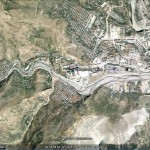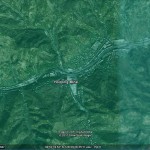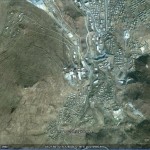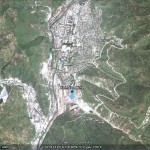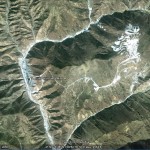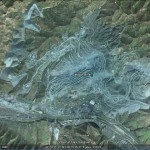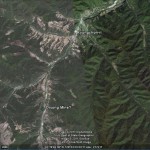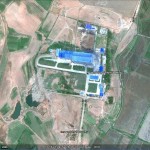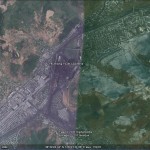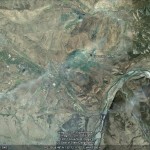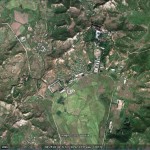UPDATE 2 (2014-1-27): The North Korean restaurant has re-opened in Amsterdam. According to NK News:
While the Pyongyang Restaurant [See Below] shut down the same year as it opened – allegedly due to a dispute between the Dutch owner Remco Van Daal and its North Korean staff – the Haedongwha staff will now be managed in cooperation with an ethnic Korean manager named John Kim.
…
Kim, who has lived in the Netherlands for most of his life, also runs a business in Pyongyang exporting sand to Singapore, a source familiar with his background told NK News.
Unlike Haedangwha restaurants in China, which are run directly by the North Korean government, the Netherlands branch is unique in having non-North Korean ownership but a North Korean staff.
You can read more about the restaurant in Het Parool.
Michael Madden tracked down the location.
Here is the official web page of the restaurant.
Learn more about the “other” Haedanghwa here.
UPDATE 1 (2012-9-6): The restaurant has closed. According to the Associated Press:
A North Korean restaurant in Amsterdam staffed by cooks and waitresses from the isolated country has closed its doors.
Dutch newspaper De Telegraaf reported Thursday that Pyongyang Restaurant’s closure was permanent and stemmed from a disagreement between its Dutch owners and North Korean staff.
The restaurant was an oddity, believed to be the only of its kind in Western Europe, though there are similar restaurants in Asia. Dutch labor authorities say North Koreans can get work visas for Europe under standard rules, but few do.
A woman who answered the phone at the restaurant said the establishment was closed. She couldn’t say for how long because she was not authorized to do so. Its website says it is closed “due to holidays.” Phone calls to the owner Thursday went unanswered.
See more here at North Korea Leadership Watch.
ORIGINAL POST (2012-2-5): According to Yonhap:
A North Korean restaurant has opened in the Dutch capital of Amsterdam in what could be the communist nation’s latest attempt to earn hard currency and foster closer ties with Europe.
The “Pyongyang Restaurant” was launched late last month under a joint venture between North Korea and two Dutch businessmen. While North Korea is known to operate dozens of restaurants across Asia, it is the first time a North Korean restaurant has opened in Europe, with the exception of a canteen that briefly operated near the North Korean Embassy in Vienna in the mid-1990’s, according to a local source, who spoke on the condition of anonymity.
The restaurant is staffed by nine North Koreans, including the director and manager, Han Myong-hee, who worked for 15 years at a North Korean restaurant in Beijing operated by the North’s ruling Workers’ Party.
Pyongyang Restaurant, which seats 24 people, has its walls covered with pictures of Pyongyang and North Korean nature, while its menu consists solely of a nine-course meal priced at 79 euros (US$104).
Han said there are plans to offer more affordable dishes such as Korean noodles and dumplings after the restaurant’s official opening on Feb. 17.
“After our official launch, we plan to gradually serve a variety of dishes and during lunch hours as well,” she said. The restaurant currently serves only dinner.
The opening ceremony is expected to be attended by the North Korean ambassador to Switzerland, other North Koreans, and key figures from the Netherlands and different European nations, Han said.
Analysts said the restaurant is likely to serve not only as a source of much-needed cash but also as a bridge to Europe for the isolated North.
“North Korea has been putting a lot of effort into normalizing relations with European nations since 2000,” said Yang Moo-jin, a professor at the University of North Korean Studies in Seoul. “The opening of North Korea’s first restaurant in Europe can be seen as the North’s attempt to improve ties with the West through exchanges at the civilian level.”
Read the full story here:
N. Korean restaurant opens in Netherlands
Yonhap
2012-2-5

